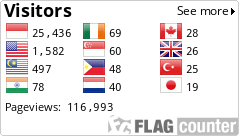The The Literacy Building Strategy For Madrasah Branding At MA Darut Taqwa Pasuruan
Abstract
Madrasah is one of the educational institutions in Indonesia that played the role and responsibility in increasing the literacy of Indonesia's students. In Indonesia itself, the reading interest still needs more attention since it is still fragile. Expanding the reading interest for students in madrasah requires the proper strategies for effective results. MA Darut Taqwa is one of the madrasahs that commit to cultivating literacy among the students. The literacy program succeeded in increasing students' interest in reading and writing. Since that, the program has become the brand image of the madrasah itself. This study aims to describe the literacy for madrasah branding strategy implemented by MA Darut Taqwa to increase students' reading and writing skills. This study uses a qualitative descriptive approach to explain the branding strategy based on literacy in MA Darut Taqwa. The data validation technique used in this research is a triangulation of sources and methods. The research data was obtained through observations and interviews with the Head of Madrasah, Deputy Head of Curriculum and the Chair of the Literacy Drive Team as parties who have a significant role in realising the literacy madrasa branding. Many programs implemented by the madrasah to increasing students' reading and writing skills, such as writing classes, authorship workshops, comparative literacy studies and familiarising students with reading and writing for 30 minutes. The result of this strategy are students able to produce 15 books qualified by ISBN and make literacy a brand image that enhances the competitiveness of madrasah.
Downloads
References
Ali, M. (2021). Branding Madrasah Literasi. Pasuruan.
Baharun, H., & Rizqiyah, L. (2020). Melejitkan Ghirah Belajar Santri melalui Budaya Literasi di Pondok Pesantren. Tadris: Jurnal Pendidikan Islam, 15(1), 108–117. https://doi.org/10.19105/tjpi.v15i1.3048
CCSU. (2016). World’s Most Literate Nations. Retrieved April 24, 2021, from Central Connecticut State University website: www.ccsu.edu/WMLN
Damayantie, A. R. (2015). Literasi dari Era ke Era. Sasindo, Jurnal Pendidikan Bahsa Dan Sastra Indonesia, 3(1), 1–10. https://doi.org/doi.org/10.26877/sasindo.v3i1.2076
GERAMM, T. P. (2019). Panduan Umum Gerakan Ayo Membangun Madrasah. Surabaya: Pendma Kemenag Jawa Timur.
Ghofur, A., & Rachma, E. A. (2019). Pemanfaatan Media Digital Terhadap Indeks Minat Baca Masyarakat Kabupaten Lamongan. Gulawentah: Jurnal Studi Sosial, 4(2), 85–92. https://doi.org/doi.org/10.25273/gulawentah.v4i2.5524
GLN, T. (2017). Materi Pendukung Literasi Baca Tulis. Jakarta: Kemendikbud.
Khotijah, & Mundiri, A. (2020). Personal Branding Kiai Politisi Berbasis Circle-C. Managere, 2(2), 182–195. Retrieved from http://jurnal.permapendis.org/index.php/managere/index
Kurniawan, K. I., Sriasih, S. A. P., & Nurjaya, I. G. (2017). Implementasi Program Gerakan Literasi Sekolah (GLS) di SMA Negeri 1 Singaraja. Jurusan Pendidikan Bahasa Dan Sastra Indonesia, 7(2), 1–11. https://doi.org/http://dx.doi.org/10.23887/jjpbs.v7i2.11966
Mahfudh, M. R., & Imron, A. (2020). Strategi Kepala Sekolah Meningkatkan Literasi Membaca Siswa di SMA Negeri 1 Kota Kediri. Indonesian Journal of Islamic Education Studies, 3(1), 16–30. https://doi.org/doi.org/10.33367/ijies.v3i1.1138
Manan, S. (2017). Pembinaan Akhlak Mulia Melalui Keteladanan dan Pembiasaan. Taklim: Jurnal Pendidikan Agama Islam, 15(1), 49–65.
Marg, S. A. (2014). Reading Corner in Schools of Mathura District, Uttar Pradesh. Retrieved April 23, 2021, from National Council of Educational Research & Taining website: www.ncert.nic.in/department
Mujib, A. (2016). Literasi Dalam Al-Quran Dan Kontribusinya Terhadap Pengembangan Epistemologi Ilmu Pendidikan Islam. IAIN Ponorogo.
Mundiri, A., Baharun, H., Wahid, A. H., Zamroni, Ramadhani, K., Imamah, L., & Zakiyah, U. (2020). Digital Branding in Increasing Civic Engagement; A Public Relation Strategy in the Battle of Perceptions. Proceedings of the First International Conference on Science, Technology, Engineering and Industrial Revolution, 61–64. Atlantis Press.
Nugraheni, R. K. (2015). Pengaruh Peran Orangtua, Motivasi Belajar dan Lingkungan Keluarga Terhadap Prestasi Belajar Siswa Kelas III SD Se-Gugus Sinduharjo Sleman Tahun Ajaran 2014/2015. Yogyakarta. Retrieved from http://repository.upy.ac.id/id/eprint/138
OECD. (2019). Reading Performance (PISA). Retrieved April 24, 2021, from Organisation for Economic Co-operation and Development website: data.oecd.org/pisa/reading-performance-pisa.htm
Permatasari, A. (2015). Membangun Kualitas Bangsa dengan Budaya Literasi. Seminar Nasional Bulan Bahasa UNIB, 146–156. Bengkulu: FKIP UNIB.
Qohar, A. (2021). Branding Madrasah Literasi. Pasuruan.
Riyanto, R. P. (2015). Pengaruh Brand Image, Promosi dan Distribusi Pada Keputusan Pembelian Sepeda. Universitas Negeri Semarang.
Rofi’uddin, M. A., & Hermintoyo. (2017). Pengaruh Pojok Baca Terhadap Peningkatan Minat Baca Siswa di SMP Negeri Pati. Jurnal Ilmu Perpustakaan, 6(1), 281–290.
Roka, Y. B. (2017). Plagiarism: Types, Causes and How to Avoid This Worldwide Problem. Nepal Journal of Neuroscience, 14(3), 2–6.
Rukmana, Y. (2016). Strategi Membangun Brand Image dalam Meingkatkan Daya Saing Lembaga Pendidikan. UIN Malik Ibrahim Malang.
Santoso, R., Pitoewas, B., & Nurmalisa, Y. (2018). Pengaruh Program Literasi Sekolah Terhadap Minat Baca Peserta Didik SMAN 2 Gadingrejo. Jurnal Kultur Demokrasi, 5(9), 1–13. Retrieved from http://jurnal.fkip.unila.ac.id/index.php/JKD/article/view/15243
Soelistya, D. (2021). Manajemen Sumber Daya Manusia (MSDM) Strategy. Sidoarjo: Nizamia Learning Center.
Sudana, P. I. (2014). Studi Banding. Retrieved April 23, 2021, from Binus University website: qmc.binus.ac.id/2014/10/28/pengertian-studi-banding/
Sugiyono. (2016). Metode Penelitian Kuantitatif, Kualitatif dan R&D. Bandung: PT. Alfabet.
Sulistiani. (2021). Branding Madrasah Literasi. Pasuruan.
Suprayekti, & Anggraeni, S. D. (2017). Pelaksanaan Program Workshop Belajar Efektif Untuk Orang Tua. Jurnal Ilmu Pendidik Dan Tenaga Kependidikan Non Formal, 12(2), 129–136. https://doi.org/doi.org/10.21009.JIV.1202.5
Suragangga, I. M. N. (2017). Mendidik Lewat Literasi Untuk Pendidikan Berkualitas. Jurnal Penjaminan Mutu, 3(2), 154–163. https://doi.org/dx.doi.org/10.25078/jpm.v3i2.195
Wardoyo, P. (2011). 6 Alat Analisis Manajemen. Semarang: Semarang University Press.
Copyright (c) 2021 Rizki Janata, Anita Puji Astutik

This work is licensed under a Creative Commons Attribution-NonCommercial-NoDerivatives 4.0 International License.




















